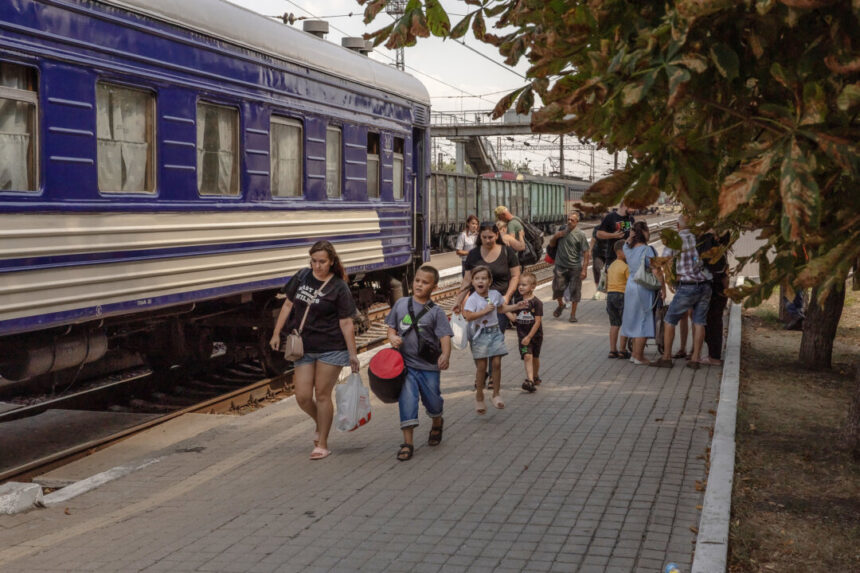Authorities reported that the town’s water supply was cut off by September 12 due to intense fighting in the area as Russian forces advanced. Meanwhile, Kyiv’s surprise incursion into Russia’s Kursk region has been making headlines for the past month. Russian forces have also been rapidly advancing in the east, capturing villages in Donetsk, part of the Donbas region. The strategic town of Pokrovsk, described as the “gateway to Donetsk” in Russian media, is now at risk of falling to Russian forces.
With its crucial role as a procurement and transportation hub for Ukrainian forces in Donbas, the capture of Pokrovsk would pose serious supply problems for Ukrainian troops in neighboring areas. The town’s location at the intersection of key supply routes linking it to other contested towns makes it a strategic target for Russian forces. Additionally, Pokrovsk is home to a coal mine that supplies Ukraine’s industrial sector with coking coal.
The fall of Pokrovsk would bring Moscow closer to achieving its goal of exerting control over all of Donbas. Russian forces aim to expand their military occupation in eastern and southern Ukraine to break the Ukrainian army’s resistance and strengthen their negotiating position. Despite facing numerically superior Russian forces, Kyiv has pledged to continue fighting with the support of Western allies to regain control of the regions lost to Russia in 2022.
Recent Russian advances in villages near Pokrovsk indicate that Russian forces are closing in on the town. Reports of complex fortifications and trench systems in captured villages suggest a challenging environment for advancing Russian troops. The town’s population has dwindled as residents flee the advancing Russian forces, with reports of cut-off water and electricity supplies adding to the dire situation in Pokrovsk.
British defense analyst Tim Ripley believes Ukrainian forces in Pokrovsk may only hold out for a couple of weeks against the encircling Russian forces. Russian tactics in Donbas involve outflanking enemy troops to create inescapable “cauldrons” where they can be surrounded and subdued. The ongoing assault on Pokrovsk signifies Russia’s relentless push to gain control over the strategic town and further its military objectives in the region.
This situation involves the gradual dismantling of Ukrainian brigades in a methodical manner.
According to Ripley, the Russians have been executing this strategy for most of the year, resulting in Ukrainian retreats just before getting surrounded.
Ripley also noted that these retreats make it harder for the Ukrainians to defend their next position.
Kursk Offensive Falls Short
Initially, Kyiv had hoped that their offensive in Kursk, now in its second month, would force Moscow to divert resources from the eastern front.
However, this plan has not been successful so far.
This week, Sergey Shoigu, head of Russia’s Security Council, stated that Russia’s advance in Donetsk has actually intensified since Kyiv’s offensive began on August 6.
Shoigu claimed that Russian forces have gained control of 390 square miles of territory in Donbas during this period.
According to Temur, the failed offensive in Kursk has highlighted the strategic importance of Pokrovsk.
He mentioned that the decision to attack Kursk was an attempt to divert Russian troops from Pokrovsk, which ultimately did not succeed.
Adding to Ukraine’s challenges, Russia has launched a significant counter-offensive in Kursk, aiming to push Ukrainian forces out of Russian territory.
As of September 11, Moscow reported recapturing at least 10 settlements near the border in Kursk.
Ripley noted that Russia has contained the Kursk offensive and their counter-offensive appears to be gaining strength.
He emphasized that the key issue in Kursk is not about Russian forces reclaiming the area but rather about the losses Ukraine will incur before withdrawing.
Considering Ukraine’s limited manpower, Ripley suggested that casualty figures will play a crucial role in determining their next move in Pokrovsk.
Reuters contributed to this report.





